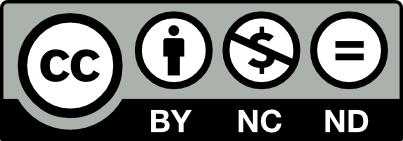This page is licensed under Creative Commons under Attribution 4.0 International. Anyone can share content from this page, with attribution and link to College MatchPoint requested.
From Computer Science to Biomedical Engineering To Business: Why Highly Selective Majors Are Changing College Admissions
It’s no longer just about getting into a highly selective college—it’s about getting into a highly selective major. Recently, the University of California system shared admission rate data by major, revealing stark differences in competitiveness across programs. For example, at UC Berkeley, the acceptance rate for Computer Science is just 4%, compared to the overall campus-wide average of 12%. Programs like Computer Science, Business, and Engineering are transforming how students approach the admissions process, requiring a strategic focus on aligning academics, activities, and applications with the expectations of these fields. Understanding these trends is crucial for students aiming to secure a spot in their dream major.

The college admissions process has evolved, with highly selective majors emerging as a critical factor in shaping outcomes. Acceptance rates no longer hinge solely on general qualifications; instead, they often vary significantly by a student’s intended field of study. Majors such as Computer Science, Business, and Engineering are reshaping how students plan their academic journeys, with some fields becoming significantly harder to access than others.
The UC System: A Case Study in Major-Specific Selectivity
The University of California system is a leader in transparency, recently sharing admission rate data by major. This data reveals stark disparities in acceptance rates between general admissions and highly selective programs. With nine undergraduate campuses offering diverse programs, the UC system serves as a prime example of how highly selective majors are transforming college admissions.
Computer Science
- Average Admit Rate: 16.86%
- At UC Berkeley: Only 4% of applicants are admitted, compared to the overall campus rate of 12%.
- At UCLA: Even lower, at 3%, compared to UCLA’s campus-wide rate of 9%.
- Why It’s Competitive: High demand for technical expertise and lucrative career opportunities make Computer Science one of the most sought-after fields.
Business
- Average Admit Rate: 28.5%
- At UC Berkeley (Haas School of Business): The admit rate is 7.3%, underscoring its global reputation.
- At UC Irvine: Business admits 13% of applicants, compared to a campus-wide rate of 25.8%.
- Why It’s Competitive: Business programs are valued for their versatility and strong career outcomes, attracting entrepreneurial and leadership-driven students.
Engineering
- Average Admit Rate: 24.83%
- At UC Berkeley: The admit rate for Engineering is 7%, significantly below the campus-wide average of 12%.
- At UCLA: Similarly, only 6% of applicants are admitted, compared to a campus-wide rate of 9%.
- Why It’s Competitive: Engineering programs are resource-intensive and require rigorous academic preparation, limiting enrollment.
Why Are These Majors So Competitive?
Highly selective majors often share common traits that drive their competitiveness:
Alignment with Workforce Needs
- Fields like Computer Science and Engineering align directly with high-growth, high-paying industries, attracting a large number of applicants.
Prestige of Programs
- Renowned programs like Berkeley’s Haas School of Business and Michigan’s Ross School of Business have global reputations, making them aspirational for top-tier students.
Resource Constraints
- Majors such as Engineering require significant investments in facilities, labs, and faculty, which inherently cap enrollment.
Pathways to Advanced Study
- Fields like Business and Engineering often serve as gateways to competitive graduate programs, drawing highly motivated students.
Selective Majors at Other Flagship Schools
Beyond the UC system, schools like UT Austin, Michigan, and UVA also demonstrate the rise of major-specific selectivity.
University of Texas at Austin
- Business (McCombs School of Business):
One of UT Austin’s most competitive programs, with an acceptance rate below 10%. - Engineering (Cockrell School of Engineering):
Majors such as Electrical and Computer Engineering admit far fewer students than the campus-wide average of 29%. - Why It’s Competitive: UT’s focus on major fit ensures students align their academics and activities with their intended field.
University of Michigan
- Ross School of Business:
A prestigious program with an acceptance rate of approximately 12%. - Computer Science:
Housed in the College of Engineering, this major has acceptance rates significantly lower than the university average of 20.2%. - Why It’s Competitive: Michigan’s academic rigor and strong alumni networks make these programs extremely appealing.
University of Virginia
- Commerce (McIntire School of Commerce):
Admits just 11% of applicants, reflecting its elite status. - Public Policy (Frank Batten School):
A similarly competitive program that attracts future policymakers. - Why It’s Competitive: UVA emphasizes leadership and innovation, which draw top students nationwide.
Strategies for Success: Standing Out for Selective Majors
Preparing for a selective major requires strategic planning, particularly in academics and extracurriculars. Here’s how students can maximize their competitiveness:
1. Build a Robust Academic Profile
- Take challenging coursework aligned with your intended major. For instance:
- Computer Science: Advanced math (e.g., Calculus) and coding courses.
- Business: Economics, statistics, and leadership-focused electives.
- Engineering: Advanced math, physics, and STEM electives.
- Maintain strong grades, as selective majors often expect near-perfect performance in key subjects.
2. Plan Activities Strategically
Activities should highlight passion, leadership, and commitment:
- Computer Science: Participate in coding competitions, internships, or independent projects.
- Business: Lead entrepreneurial initiatives, join DECA, or organize finance workshops.
- Engineering: Build innovative projects or join robotics teams and STEM competitions.
3. Focus on Leadership and Initiative
- Start a club or project tied to your major, such as organizing a local hackathon or initiating a financial literacy campaign.
- Demonstrate measurable impact, like raising funds or improving access to services for a community.
4. Showcase Depth, Not Breadth
- Focus on 4-6 meaningful activities sustained over time.
- Highlight achievements and impact, such as reaching a large audience or achieving tangible results in your efforts.
5. Craft a Compelling Narrative
- Use application essays to connect your academic interests, activities, and long-term goals.
- Choose recommenders who can vouch for your passion, leadership, and academic preparation.


